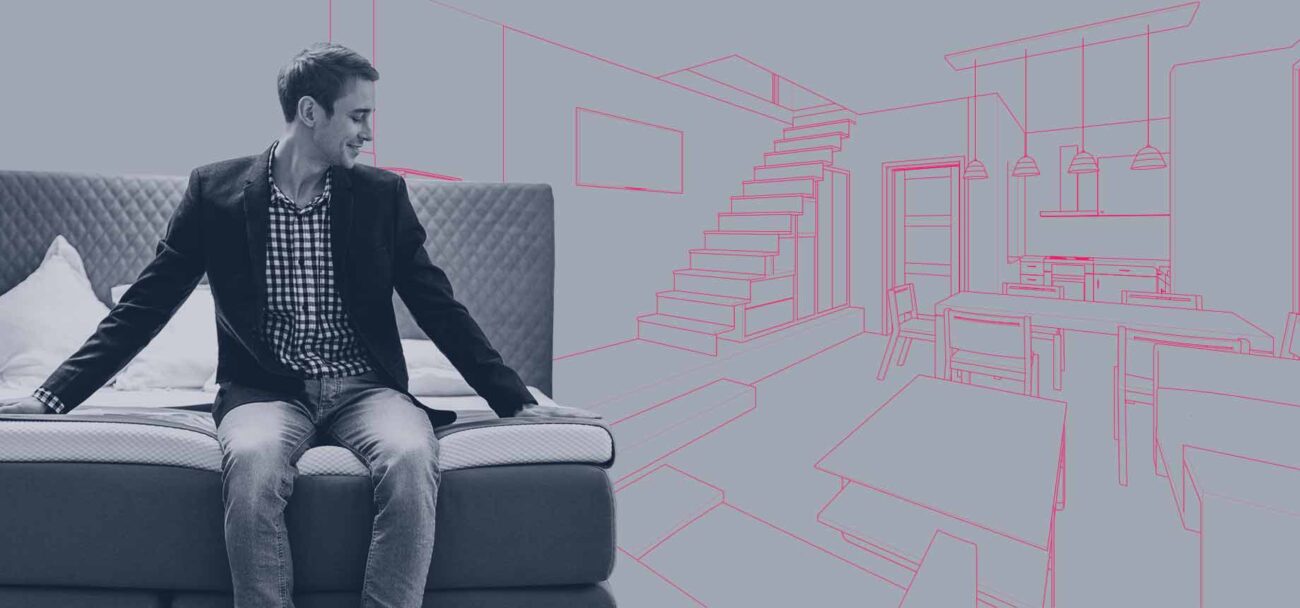
A few months ago, IKEA proudly announced that it would move into Topshop’s former flagship store on Oxford Street, Europe’s busiest shopping avenue. The famous Swedish brand took out a whopping £378M out of its deep pockets to secure the top-notch location, a behemoth of a building with 22,200 square meters spread across seven floors.
On top of conjuring up images of shoppers carrying mattresses and couches on the tube (Pivoooot!), the news prompted much speculation about the future of high-street retail. For a few years now, another so-called “retail apocalypse” had seemed to be in full swing — footfall on high streets had been falling and stores had been closing.
These malignant phenomena impacting physical retail spaces were only augmented when COVID-19 popped up in our lives, forcing people to turn to ecommerce and causing famous brick-and-mortar labels to go bust after years of mismanagement and inability to embrace digital. Notable victims included department stores Debenhams, Dorothy Perkins and Topshop.
That is why IKEA’s move appeared counterintuitive to many — why would a brand invest in a supposedly doomed channel? Below the surface, however, there are signs of a deeper metamorphosis going on, one that bets on a new combination of online and offline retail.
Those aforementioned jokes hold a bit of truth to them — IKEA’s new location in Oxford Circus will make it hard for customers to take home high-volume items by themselves. It will also be almost impossible to park a van close-by, as it’s London’s arguably most-congested area.
Thus, even though shoppers will technically be able to take home whatever they wish and the store will also offer pick-up options for online orders, the products in question will most likely be smaller ones. When it comes to heavier and bulkier home furnishings, the value proposition will probably be different:
In both of these scenarios, the brick-and-mortar store’s main purpose is to be a showroom, one where customers can touch and see the expensive products about to take over their homes, gain inspiration and maybe even obtain expert advice. It’s perhaps the first step towards experiential retail, a concept in which physical stores are no longer just about buying, but about offering different store experiences and creating communities.
IKEA is not alone in pursuing this new retail trend. Other homeware brands, some digitally-first, are already following or about to follow the same formula. For example, MADE.com and Habitat in the UK, as well as Wayfair in the US, just to name a few, are placing the customer experience front and center in this manner. The retail experience is also being elevated in other industries, such as fashion and health & beauty — LUSH, anyone?

IKEA’s vote of confidence in a physical location busts some retail myths whilst highlighting new changes on the horizon. Here are some of them.
Despite dropping in levels due to the rising popularity of online retail, brick-and-mortar will always hold a certain allure and it’s about to make a comeback post-pandemic when the need for human interaction will be high. In due time, the two channels will stabilize and learn to coexist in harmony.
However, until then, the threat of extinction will trigger alterations to the brick-and-mortar DNA, bringing forth new concepts and strategies (e.g. immersive experiences) that help brands stay afloat.
Hand in hand with these new ways to stand out, we can expect the high street to look fairly different soon enough. Picture pop-up stores (like the Magnum Pleasure Store on Regent Street) and short-term letting for seasonal collection showcases, many more restaurants and cafés and, well, retail experiences.
With many of these famous high streets also having their own management and budget, one can also anticipate the “shoppertainment” wave to make an appearance. Events such as live music concerts, art gallery exhibitions and flashy Christmas lights can attract the masses and entice them to shop in the vicinity afterwards, on top of offering a complete experience.
Unlike fashion, for instance, the homeware vertical actually boomed during the pandemic as everyone desired to invest more in the space they’re in 24/7. That influx of cash is bound to be visible in some of these brands’ upcoming expansions and especially in their new locations.
With homeware being more expensive than fashion, which was traditionally the staple of high-street retail, the decision to be present in these prime locations also allows consumers to browse products in a more accessible manner. After all, a dress is easier to return than a newly-installed couch.
Once online and offline reach a certain symbiosis, an omnichannel approach will be key and companies will have no excuse if they’re caught unprepared. Brands and retailers will need to offer all combinations between medium of purchase and medium of fulfillment to increase customer convenience and, in parallel, think about how to surprise and delight them along the shopping journey — VR-driven product previews, personalized advice from artificial intelligence, paying automatically through the online account like at Amazon Fresh.
Bottomline, investment in technology and innovation will be a must moving forward and brands need to embrace change and the opportunities it brings. If IKEA found a way to spin Topshop’s demise and the supposed death of brick-and-mortar to its advantage, what’s stopping your business?

